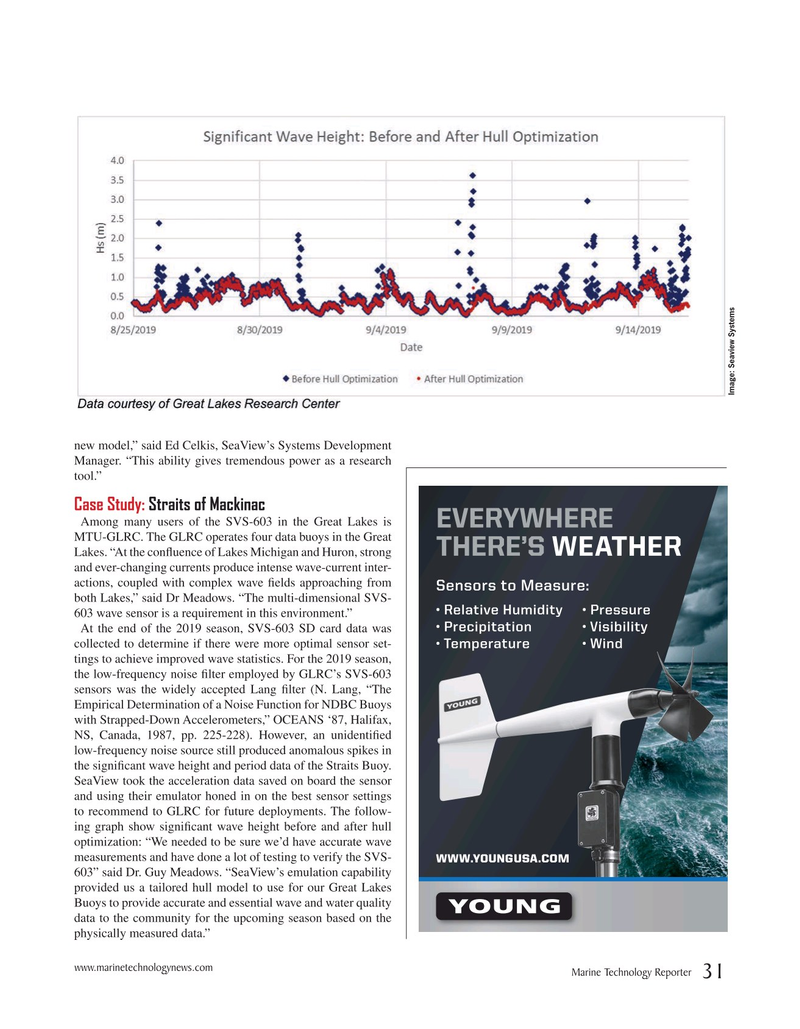
Page 31: of Marine Technology Magazine (June 2020)
Read this page in Pdf, Flash or Html5 edition of June 2020 Marine Technology Magazine
Image: Seaview Systems new model,” said Ed Celkis, SeaView’s Systems Development
Manager. “This ability gives tremendous power as a research tool.”
Case Study: Straits of Mackinac
Among many users of the SVS-603 in the Great Lakes is
MTU-GLRC. The GLRC operates four data buoys in the Great
Lakes. “At the confuence of Lakes Michigan and Huron, strong and ever-changing currents produce intense wave-current inter- actions, coupled with complex wave felds approaching from both Lakes,” said Dr Meadows. “The multi-dimensional SVS- 603 wave sensor is a requirement in this environment.”
At the end of the 2019 season, SVS-603 SD card data was collected to determine if there were more optimal sensor set- tings to achieve improved wave statistics. For the 2019 season, the low-frequency noise flter employed by GLRC’s SVS-603 sensors was the widely accepted Lang flter (N. Lang, “The
Empirical Determination of a Noise Function for NDBC Buoys with Strapped-Down Accelerometers,” OCEANS ‘87, Halifax,
NS, Canada, 1987, pp. 225-228). However, an unidentifed low-frequency noise source still produced anomalous spikes in the signifcant wave height and period data of the Straits Buoy.
SeaView took the acceleration data saved on board the sensor and using their emulator honed in on the best sensor settings to recommend to GLRC for future deployments. The follow- ing graph show signifcant wave height before and after hull optimization: “We needed to be sure we’d have accurate wave measurements and have done a lot of testing to verify the SVS- 603” said Dr. Guy Meadows. “SeaView’s emulation capability provided us a tailored hull model to use for our Great Lakes
Buoys to provide accurate and essential wave and water quality data to the community for the upcoming season based on the physically measured data.” www.marinetechnologynews.com
Marine Technology Reporter 31

 30
30

 32
32
